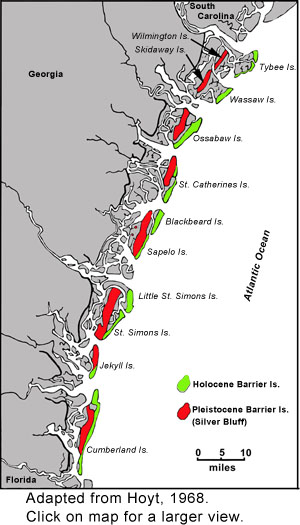
Altamaha Basin > Hydrology > Water Quality > Environmental Threats > Human Impacts > Cultural Features > Coastal Habitats > Tributaries > Plants > Animals > Sapelo Island |
||
|
Newer sediments have built up on the ancient core of today’s barrier islands (called the Silver Bluff Formation by geologists). These Holocene sediments, as they are known to geologists, are mostly sand deposited by winds, waves and currents. This process of sedimentation is accompanied by erosion of sand from the islands by the same processes that deposit it elsewhere. This is called the coastal sand-sharing system, and it results in a constantly changing shoreline. Because the prevailing coastal currents are from north to south, erosion most often occurs on the northern ends of islands and deposition most often occurs on the southern ends. The south end of Sapelo Island has grown significantly over just the last 50 years. Map adapted from Hoyt, 1968. |
 |
|||
|
More information on barrier islands |
||||